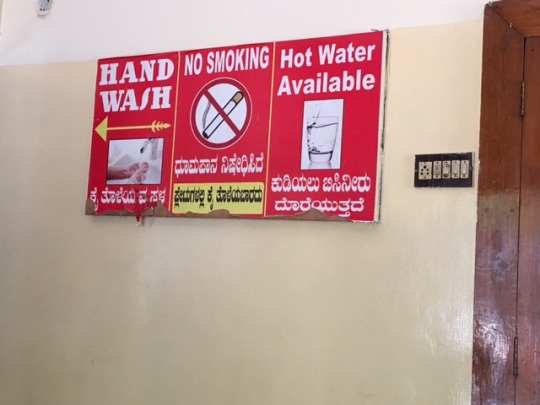Okay, here’s what we’re working with: the Sri Durga menu. It’s hung up on the wall in the front room.
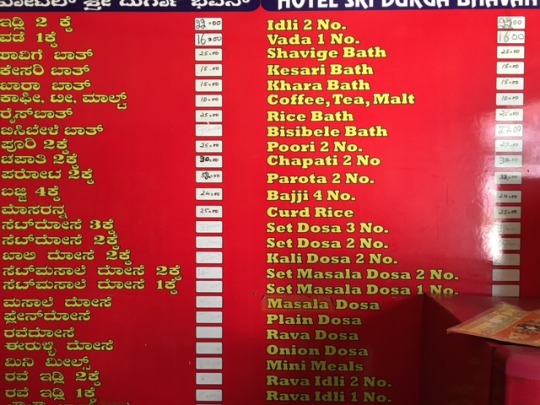
I’ve been doing the baths and Sara’s been working on the dosas. There’s also a section of breads (poori, chapati, parota). We’re not sure what gets served with the bread, and we’ve been alternately eager and kind of afraid of what it’ll be like when we get to “bread week.” Will we be undernourished and sad, or do the breads come with awesome chutney and sambar? We’ll have to see.
A great thing about our project is that we are learning so much about what’s on this menu. Soon we’ll be proficient enough to order everything using just the left side of the menu. Kidding. But no kidding, the food of south India and Karnataka is fantastic.
Alrighty, on to our meal.
Rice bath
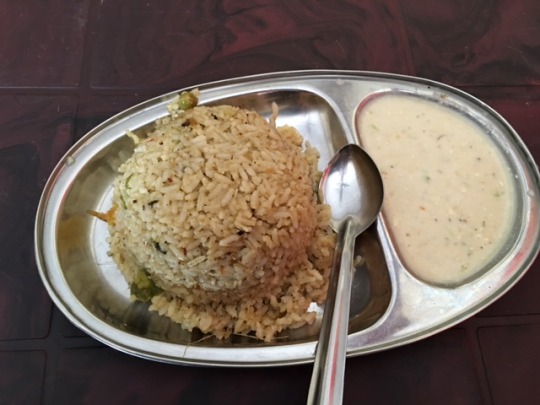
This is what I ordered. Rice bath is rice mixed with tomatoes, onions, green peas and a bunch of spices, including chili powder, jeera, curry leaves, cinnamon, cloves, green chili, red chili, and ginger. Despite all of the spices, it’s kind of mild – or maybe I am losing all sense of how spicy things are. Regardless, it is delicious. I even found a few surprise green beans in there. And as always, there’s a nice serving of coconut chutney.
Idly and vada
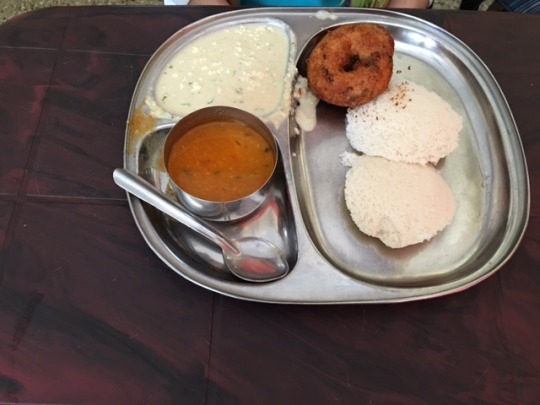
Idly is made of fermented ground lentils and rice. The rice-lentil batter is poured into an idli pan, which has round molds, and placed into a pressure cooker. Idly is served with sambar (the red stew) and – of course! – coconut chutney.
The golden-brown donut-thing is a vada. Vadas are savory fritters made of lentils, chilis, onions, curry leaves, etc.
Manju, the manager of Sri Durga, immediately said “vada” when Sara ordered idly, and was pretty insistent that they go together. He’s noticed that we come in for lunch each day, that we can’t pronounce what we want, that we ask for things at the wrong time of day, and that we can’t figure out how to use the tea cups (more on that in a moment). We agreed to his suggestion of a vada, and decided to bring him into our research as a subject matter expert.
Chai
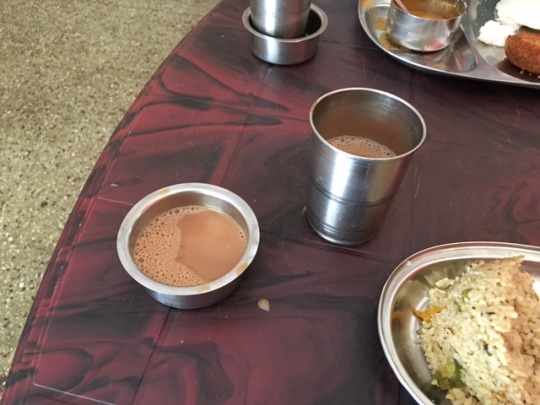
Chai is milky sweet black tea with spices. The chai at Sri Durga is delicious and boiling hot. It’s also served in metal cups. Do we gingerly pick up our highly efficient heat-conducting cups and blow on our tea and burn our fingers and lips? Yup. After witnessing this, Manju showed us how to cool the tea. When it’s brought to the table, the cup is in a small metal container. We thought the container was to keep the person bringing it to the table from burning their fingers, but Manju did a demonstration for us. He picked up the tea cup, held it two feet above the second container, and poured it from one container to the other. Voila: your tea is cooled. He also pointed out, as we clumsily tried our hands at this, that HE could pour it from an impressive distance, whereas we would make a huge mess if we tried. We stuck to just pouring from container to container at a modest height, though Sara has ambitions for greater altitude.
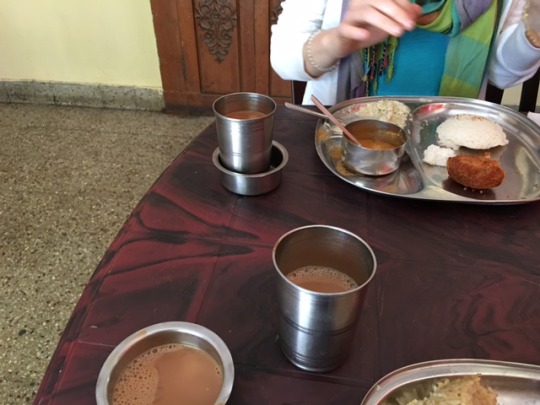
Signage
On the wall near the shrine, a note about where to wash your hands, a reminder not to smoke, and the ubiquitous “hot water available” sign. I’m not sure if the hot water is to drink. Looks like it in the picture. We’ll find out.
